Related Research Articles

Greensboro is a city in Hale County, Alabama, United States. At the 2010 census the population was 2,497, down from 2,731 at the 2000 census. The city is the county seat of Hale County, Alabama, which was not organized until 1867. It is part of the Tuscaloosa, Alabama Metropolitan Statistical Area.
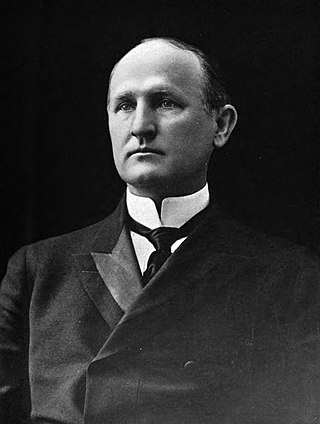
Charles Brantley Aycock was the 50th governor of the U.S. state of North Carolina from 1901 to 1905. After starting his career as a lawyer and teacher, he became active in the Democratic Party during the party's Solid South period, and made his reputation as a prominent segregationist.

A normal school or normal college is an institution created to train teachers by educating them in the norms of pedagogy and curriculum. Many such schools have since been called teacher training colleges or teachers' colleges, but in Mexico, continue to be called normal schools, with student-teachers being known as normalistas. Many schools require a high school diploma for entry, and may be part of a comprehensive university. Normal schools in the United States, Canada, and Argentina trained teachers for primary schools, while in Europe, the equivalent colleges typically educated teachers for primary schools and later extended their curricula to also cover secondary schools.

Alabama State University is a public historically black university in Montgomery, Alabama. Founded in 1867, during the Reconstruction era, it was one of about 180 "normal schools" established by state governments in the 19th century to train teachers for the rapidly growing public common schools. It was one of 23 established to train African Americans to teach in segregated schools. Some of the 180 closed but most steadily expanded their role and became state colleges in the early 20th century and state universities in the late 20th century. ASU is a member-school of the Thurgood Marshall College Fund.

Samuel Chapman Armstrong was an American soldier and general during the American Civil War who later became an educator, particularly of non-whites. The son of missionaries in Hawaii, he rose through the Union Army during the American Civil War to become a general, leading units of Black American soldiers. He became best known as an educator, founding and becoming the first principal of the normal school for Black American and later Native American pupils in Virginia which later became Hampton University. He also founded the university's museum, the Hampton University Museum, which is the oldest Black American museum in the country, and the oldest museum in Virginia.
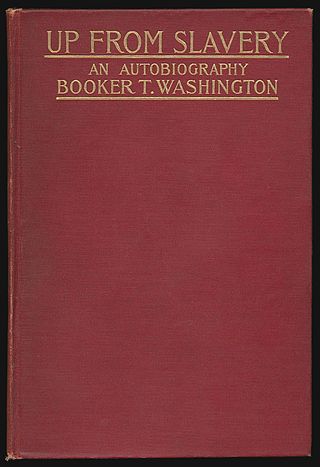
Up from Slavery is the 1901 autobiography of the American educator Booker T. Washington (1856–1915). The book describes his experience of working to rise up from being enslaved as a child during the Civil War, the obstacles he overcame to get an education at the new Hampton Institute, and his work establishing vocational schools like the Tuskegee Institute in Alabama to help Black people and other persecuted people of color learn useful, marketable skills and work to pull themselves, as a race, up by the bootstraps. He reflects on the generosity of teachers and philanthropists who helped educate Black and Native Americans. He describes his efforts to instill manners, breeding, health and dignity into students. His educational philosophy stresses combining academic subjects with learning a trade. Washington explained that the integration of practical subjects is partly designed to "reassure the White community of the usefulness of educating Black people".

William Hooper Councill was a former slave and the first president of Huntsville Normal School, which is today Alabama Agricultural and Mechanical University in Normal, Alabama.
Thomas J. Seay was an American Democratic politician who was the 27th Governor of Alabama from 1886 to 1890.

The Lincoln Normal School (1867–1970), originally Lincoln School and later reorganized as State Normal School and University for the Education of Colored Teachers and Students, was a historic African American school expanded to include a normal school in Marion, Alabama. Founded less than two years after the end of the Civil War, it is one of the oldest HBCUs in the United States.

Tullibody is a village set in the Central Lowlands of Scotland. It lies north of the River Forth near to the foot of the Ochil Hills within the Forth Valley. The village is 1.8 miles (2.9 km) south-west of Alva, 1.8 miles (2.9 km) north-west of Alloa and 4.0 miles (6.4 km) east-northeast of Stirling. The village is part of the Clackmannanshire council area.
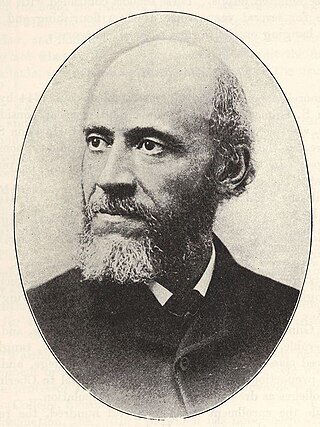
Peter Humphries Clark was an American abolitionist and speaker. One of Ohio's most effective black abolitionist writers and speakers, he became the first teacher engaged by the Cincinnati black public schools in 1849, and the founder and principal of Ohio's first public high school for black students in 1866. Because of these accomplishments, he was named the nation's primary black public school educator. Clark is also remembered as the first African-American socialist in the United States, running for Congress in 1878 under the banner of the Socialist Labor Party of America.
Walter Lynwood Fleming (1874–1932) was an American historian of the South and Reconstruction. He was a leader of the Dunning School of scholars in the early 20th century, who addressed Reconstruction era history using historiographical technique. He was a professor at Vanderbilt University from 1917 through his career, also serving as Dean of the School of Arts and Sciences, and Director of the Graduate School. A prolific writer, he published ten books and 166 articles and reviews. The son of a plantation owner who had slaves, Fleming was sympathetic to White supremacist arguments and Democratic Party positions of his era while critical of Republicans and Reconstruction.
The Noyes Academy was a racially integrated school, which also admitted women, founded by New England abolitionists in 1835 in Canaan, New Hampshire, near Dartmouth College, whose then-abolitionist president, Nathan Lord, was "the only seated New England college president willing to admit black students to his college".
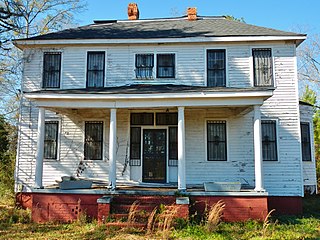
The Calhoun Colored School (1892–1945), was a private boarding and day school for Black students in Calhoun, Lowndes County, Alabama, about 28 miles (45 km) southwest of the capital of Montgomery. It was founded in 1892 by Charlotte Thorn and Mabel Dillingham, from New England, in partnership with Booker T. Washington of Tuskegee Institute, to provide education to rural black students. African Americans comprised the majority in this area, and the state had segregated facilities. Calhoun Colored School was first designed to educate rural black students according to the industrial school model common at the time.
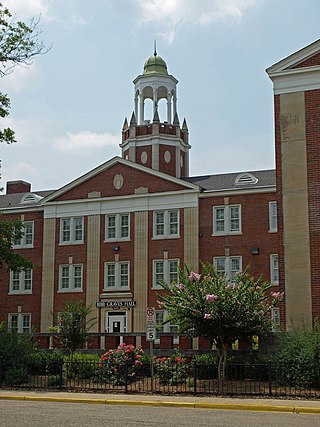
The Alabama State University Historic District is a 26-acre (11 ha) historic district at the heart of the Alabama State University campus in Montgomery, Alabama. It contains eighteen contributing buildings, many of them in the Colonial Revival style, and one site. The district was placed on the Alabama Register of Landmarks and Heritage on August 25, 1994, and the National Register of Historic Places on October 8, 1998.

Nicholas Franklin Roberts was a leading Baptist minister and educator in Raleigh, North Carolina. He was a faculty member and for a short time acting president at Shaw University. He was also a city alderman in Raleigh and served on the county board of education.

Montgomery Industrial School for Girls was a private primary school founded by Alice White and H. Margaret Beard in Montgomery, Alabama, in 1886. Their goal was to instill rigorous Christian morals and a vocational education, with academic courses for black girls from kindergarten to eighth grade. According to the Encyclopedia of Alabama, "the school played an important role in shaping the lives of a number of women who would help spark the civil-rights movement in Montgomery, the state of Alabama, and the nation".
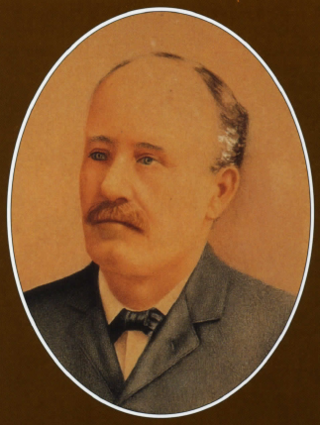
William Burns Paterson was an educator and horticulturist. He is chiefly known as an educational provider, being involved in establishing Alabama State University. He was a Democrat, a Presbyterian, and a charter member of the Alabama State horticultural society.

Jesse Chisholm Duke was a religious and political leader in Alabama who established and edited the Baptist Montgomery Herald newspaper and served as a Selma University trustee. He advocated for civil rights for African Americans.
Gilbert Academy was a premier preparatory school for African American high school students in New Orleans, Louisiana. Begun in 1863 in New Orleans as a home for colored children orphaned by the American Civil War, the home moved to Baldwin, Louisiana in 1867. The Orphans Home evolved into a school and, over the next 80 years, became Gilbert Academy, a college preparatory school for African Americans. Gilbert Academy returned to New Orleans, achieved accreditation by the Southern Association of Secondary Schools and Colleges, and graduated many notable students until it closed in 1949.
References
- ↑ Chisholm, Hugh, ed. (1911). . Encyclopædia Britannica . Vol. 1 (11th ed.). Cambridge University Press. pp. 459–464.
- ↑ Sherer, Robert G. (1930). "William Burns Paterson: "Pioneer as well as Apostle of Negro Education in Alabama". The Alabama Historical Quarterly. 36 (2: summer 1974): 134. Retrieved 10 July 2017.
- ↑ Boothe, Charles Octavius (1895). The cyclopedia of the colored Baptists of Alabama, their leaders and their work. Birmingham: Alabama Publishing Company. p. 104. Retrieved 11 July 2017.